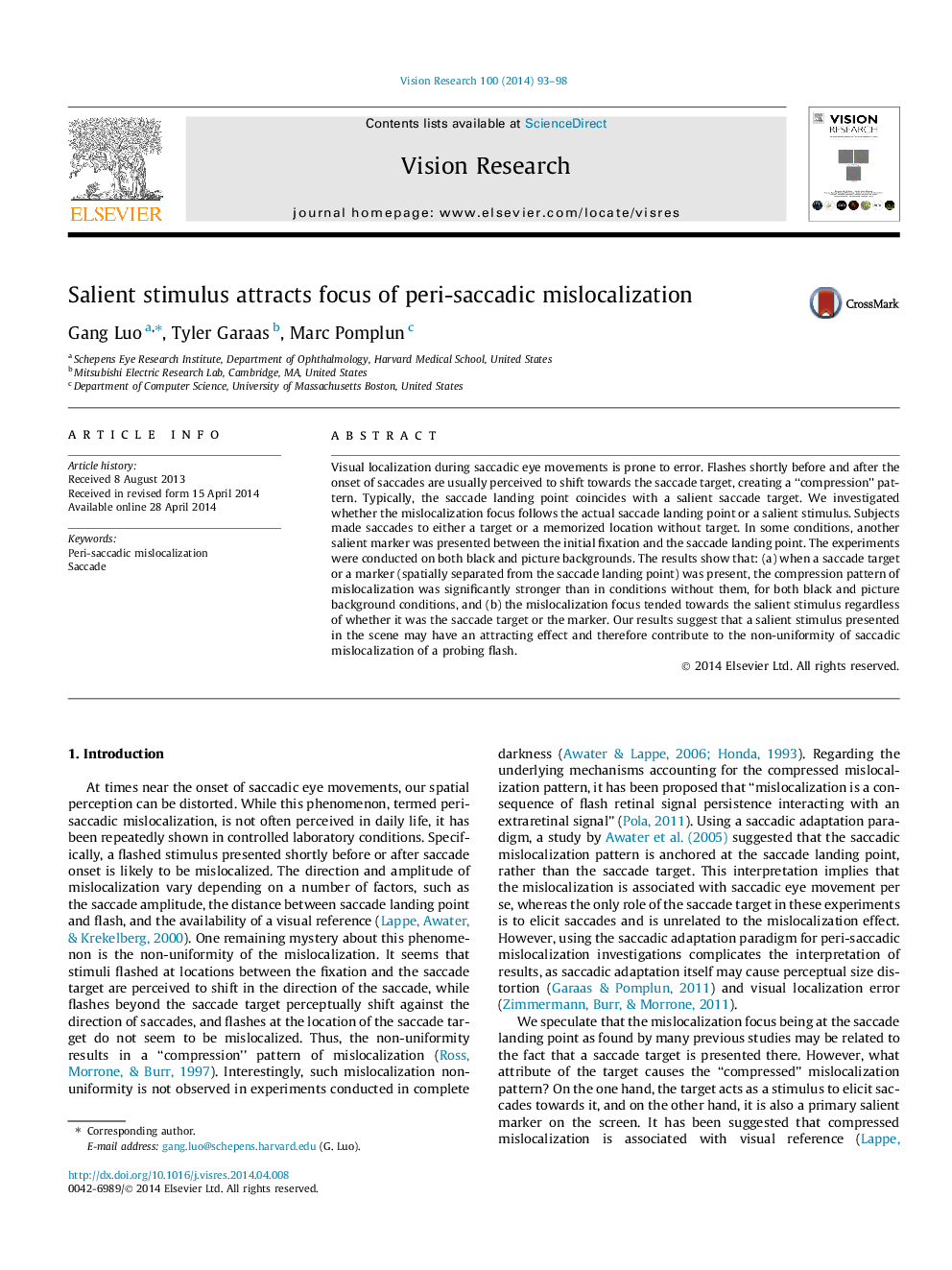| Article ID | Journal | Published Year | Pages | File Type |
|---|---|---|---|---|
| 6203333 | Vision Research | 2014 | 6 Pages |
â¢Focus of peri-saccadic mislocalization follows salient stimuli, not necessarily the saccade goal.â¢Attracting effect of salient stimuli is not diminished by visible background.â¢Absence of salient stimulus including saccade target results in less compression.â¢A strong visual reference can influence perceived location of peri-saccadic flashes.
Visual localization during saccadic eye movements is prone to error. Flashes shortly before and after the onset of saccades are usually perceived to shift towards the saccade target, creating a “compression” pattern. Typically, the saccade landing point coincides with a salient saccade target. We investigated whether the mislocalization focus follows the actual saccade landing point or a salient stimulus. Subjects made saccades to either a target or a memorized location without target. In some conditions, another salient marker was presented between the initial fixation and the saccade landing point. The experiments were conducted on both black and picture backgrounds. The results show that: (a) when a saccade target or a marker (spatially separated from the saccade landing point) was present, the compression pattern of mislocalization was significantly stronger than in conditions without them, for both black and picture background conditions, and (b) the mislocalization focus tended towards the salient stimulus regardless of whether it was the saccade target or the marker. Our results suggest that a salient stimulus presented in the scene may have an attracting effect and therefore contribute to the non-uniformity of saccadic mislocalization of a probing flash.
